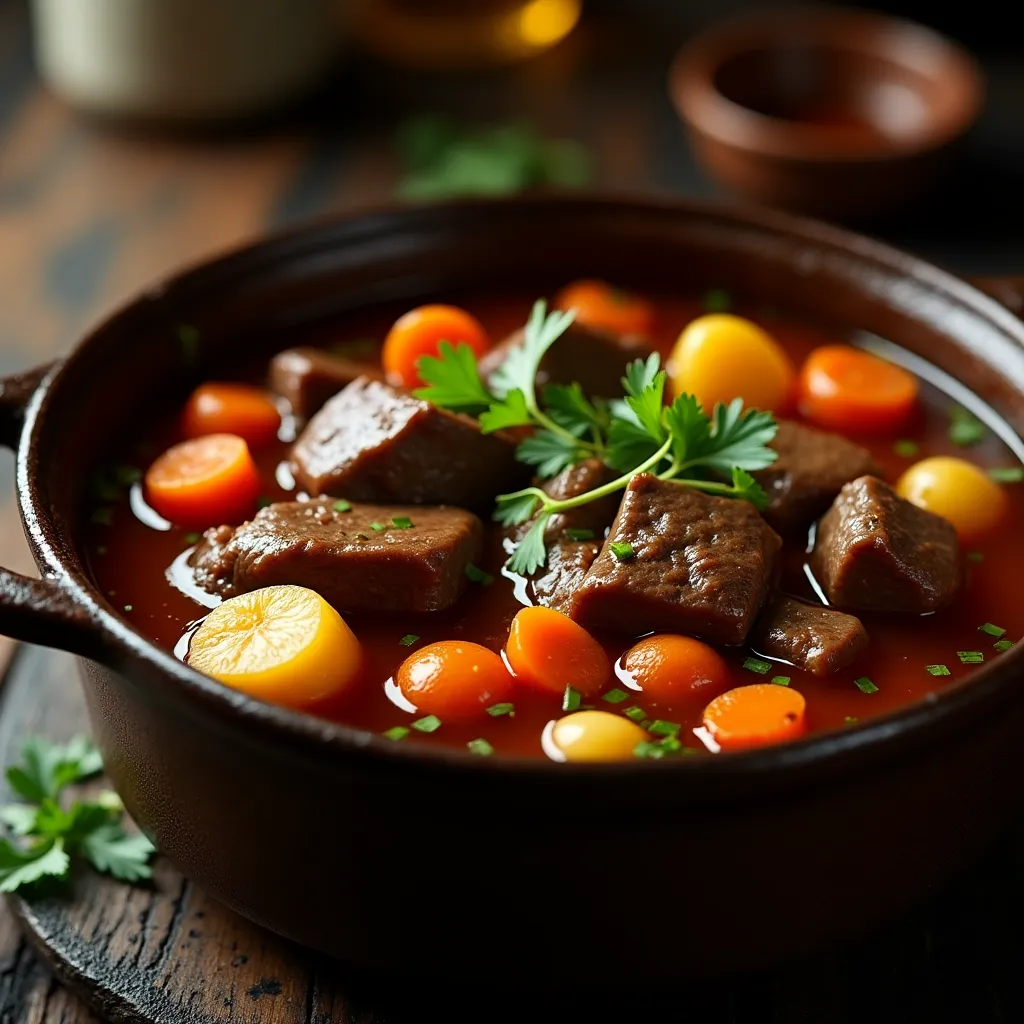When cold nights call for comfort, nothing beats a hearty beef stew. This savory recipe promises warmth and richness in every bite, combining tender beef with vibrant vegetables. Our beef stew is not only filling but also brimming with deep, satisfying flavors that have made it a household favorite across generations. Ready to create a cozy night meal that the whole family will love? Let’s gather the essentials and begin crafting this comforting dish.
What Makes This Hearty Beef Stew Special
Traditional Roots of Beef Stew
The Unique Blend of Ingredients
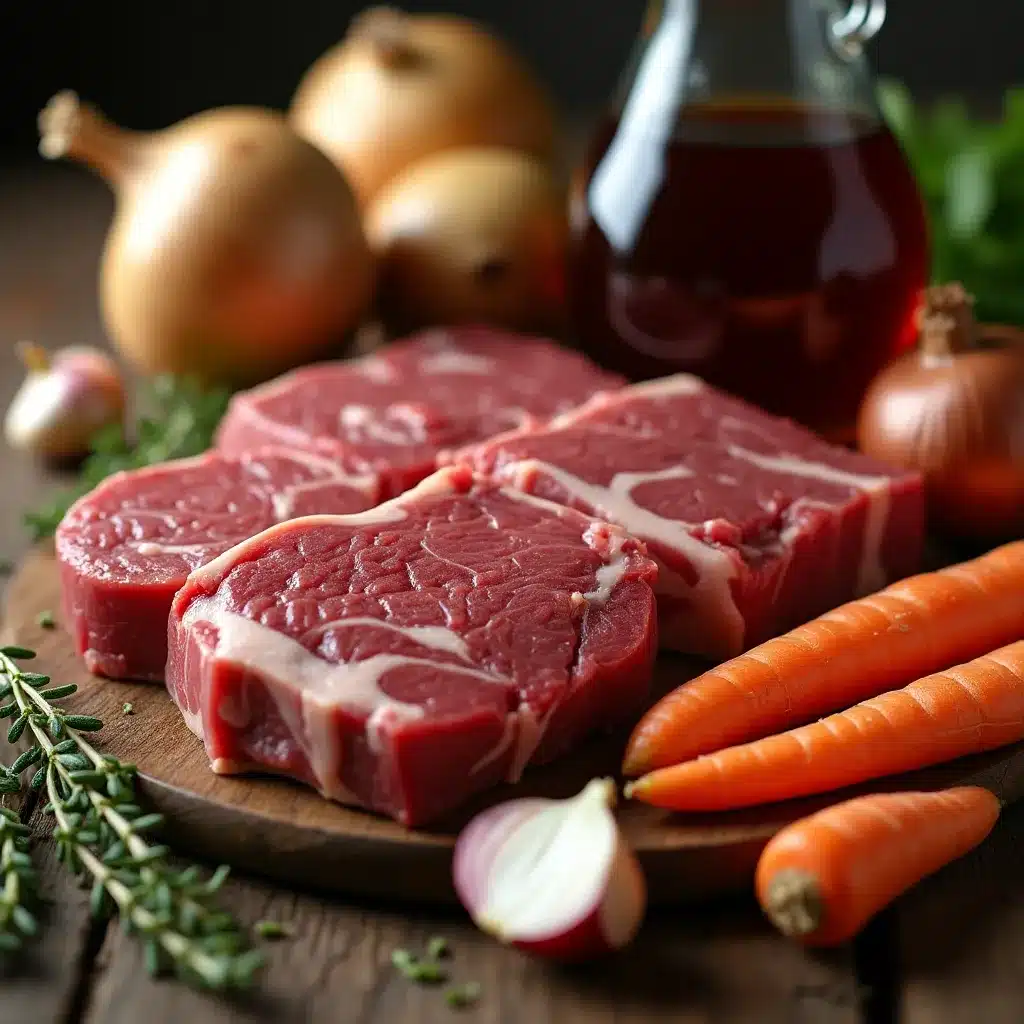
At the heart of a hearty beef stew lies the ingredient blend that makes it so special. It is a very basic recipe—beef, carrots, potatoes, and broth—but the result is anything but basic. While many other recipes might use beef stock to create the broth, I make mine with a very simple and quick version of beef stock that I learned to make when I was working at Ruth’s Chris Steak House.
The outcome is pleasingly harmonious; the flavors balance nicely. The tender beef soaks up the broth’s richness, and the vegetables—don’t ask me how, but somehow just—do land sweet notes out of the places they’re supposed to, non-sustained. And your spoon hits that balance. On the way to your mouth, your bite goes through soft-stewing tenderness and comes up against more hearty parts that should be in any beef stew.
Combining these basic components, the stew achieves a complexity that is both recognizable and pleasing, truly making it a classic dish.
Ingredients and Step-by-Step Instructions for Hearty Beef Stew
Classic Hearty Beef Stew Instructions
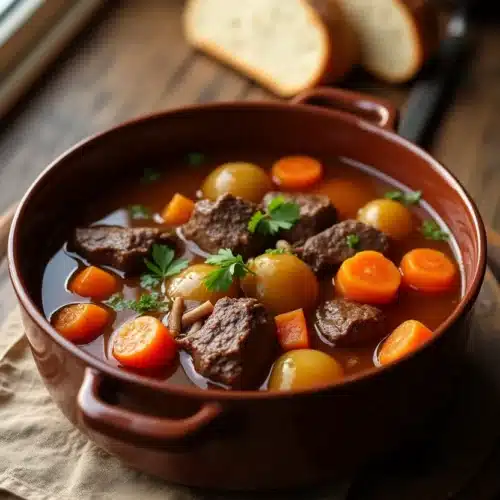
Classic Hearty Beef Stew
Equipment
- 1 Large pot For cooking the stew
- 1 Wooden Spoon For stirring
- 1 Chef's knife For chopping
Ingredients
Beef Chuck
- 2 pounds beef chuck cut into chunks
Seasoning
- Salt and black pepper to taste
Oil
- 3 tablespoons olive oil
Vegetables
- 1 large onion chopped
- 2 cloves garlic minced
- 3 carrots sliced
- 3 potatoes diced
Broth
- 4 cups beef broth
Flavoring
- 2 tablespoons tomato paste
- 1 teaspoon thyme
- 1 bay leaf
Instructions
Prepare the Beef
- Season the beef chunks with salt and black pepper. Heat 2 tablespoons of olive oil in a large pot over medium heat. Add the beef and brown on all sides. Once done, remove the meat from the pot and set aside.
- In the same pot, add the remaining tablespoon of olive oil. Add the chopped onion and minced garlic, sautéing until the onion becomes translucent.2 pounds beef chuck
- Return the beef to the pot. Add the sliced carrots and diced potatoes. Stir in the beef broth, tomato paste, thyme, and bay leaf. Mix well to combine all ingredients.Salt and black pepper, 2 pounds beef chuck
- Bring the stew to a boil, then reduce the heat to low. Cover and let it simmer for about 2 hours, or until the beef is tender and the flavors have melded together. Stir occasionally to prevent sticking.
- Once cooked, remove the bay leaf and adjust seasoning with additional salt and pepper if necessary. Serve hot, garnished with fresh parsley if desired. Enjoy your classic hearty beef stew!
Spiced Hearty Beef Stew Variation
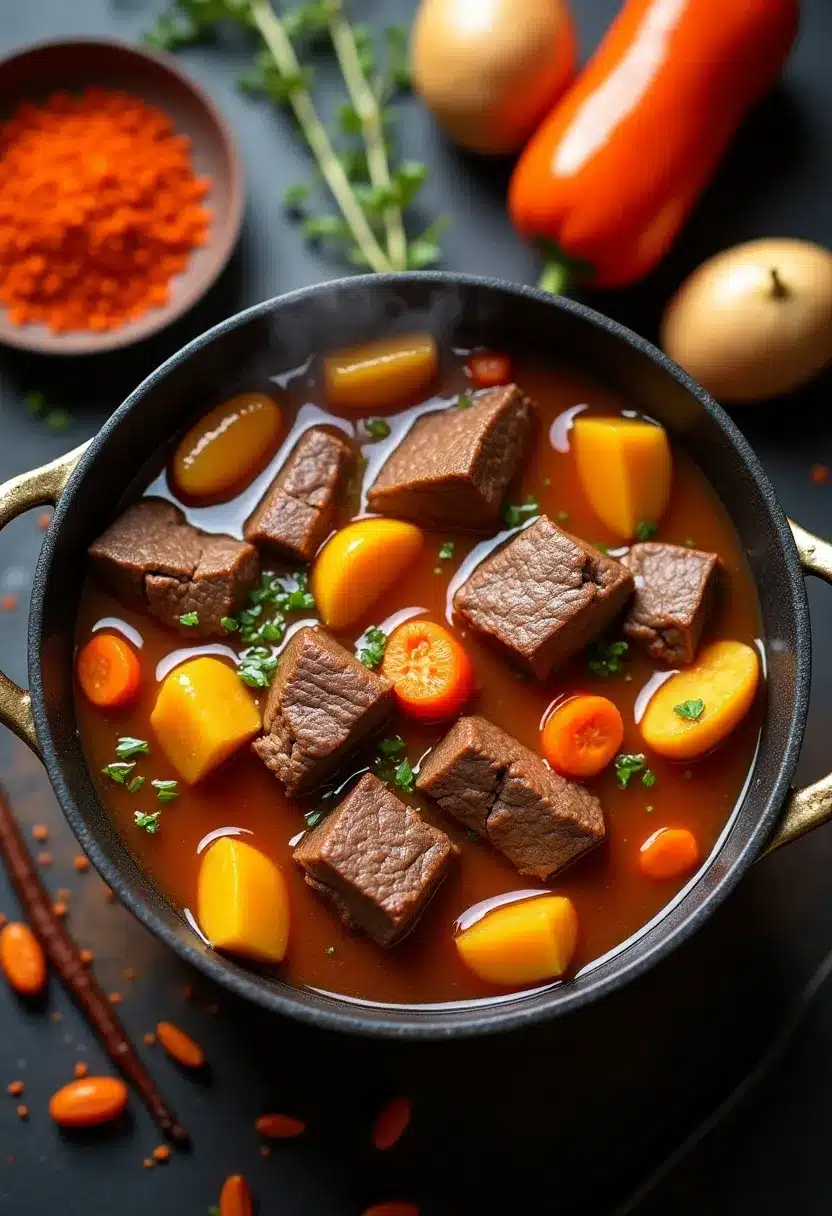
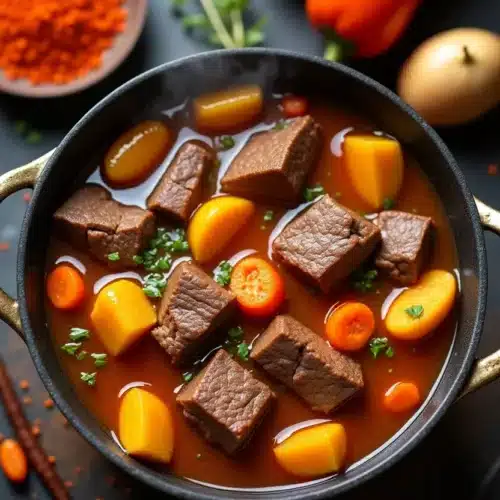
Spiced Beef Stew
Equipment
- 1 Large pot
- 1 Wooden Spoon
- 1 Knife for chopping
- 1 Cutting board
Ingredients
Main Ingredients
- 2 pounds beef chuck cut into chunks
- salt and black pepper to taste
- 3 tablespoons olive oil
- 1 large onion chopped
- 2 cloves garlic minced
- 3 carrots sliced
- 3 potatoes diced
- 4 cups beef broth
- 2 tablespoons tomato paste
- 1 teaspoon paprika
- 1/2 teaspoon cayenne pepper
- 1 teaspoon thyme
- 1 bay leaf
Instructions
Prepare Ingredients
- Sprinkle the beef chunks with salt and black pepper. In a large pot, heat 2 tablespoons of olive oil over medium heat. Brown the beef on all sides, then remove it from the pot and set aside.
- Add the remaining tablespoon of olive oil to the pot. Sauté the chopped onion and minced garlic until the onion is translucent and fragrant.
- Reintroduce the beef to the pot. Stir in the sliced carrots, diced potatoes, and beef broth. Add the tomato paste, paprika, cayenne pepper, thyme, and bay leaf. Stir well to ensure everything is evenly coated and blended.
- Bring the mixture to a boil, then reduce the heat to low. Cover the pot and let the stew simmer for about 2 hours, or until the beef is tender and the flavors are well incorporated. Stir occasionally.
- Once fully cooked, remove the bay leaf and adjust the seasoning with additional salt or pepper if needed. Serve warm, enjoying the aromatic spices that add an extra layer of depth to this hearty stew.
Troubleshooting and Tips
Preventing Tough Beef
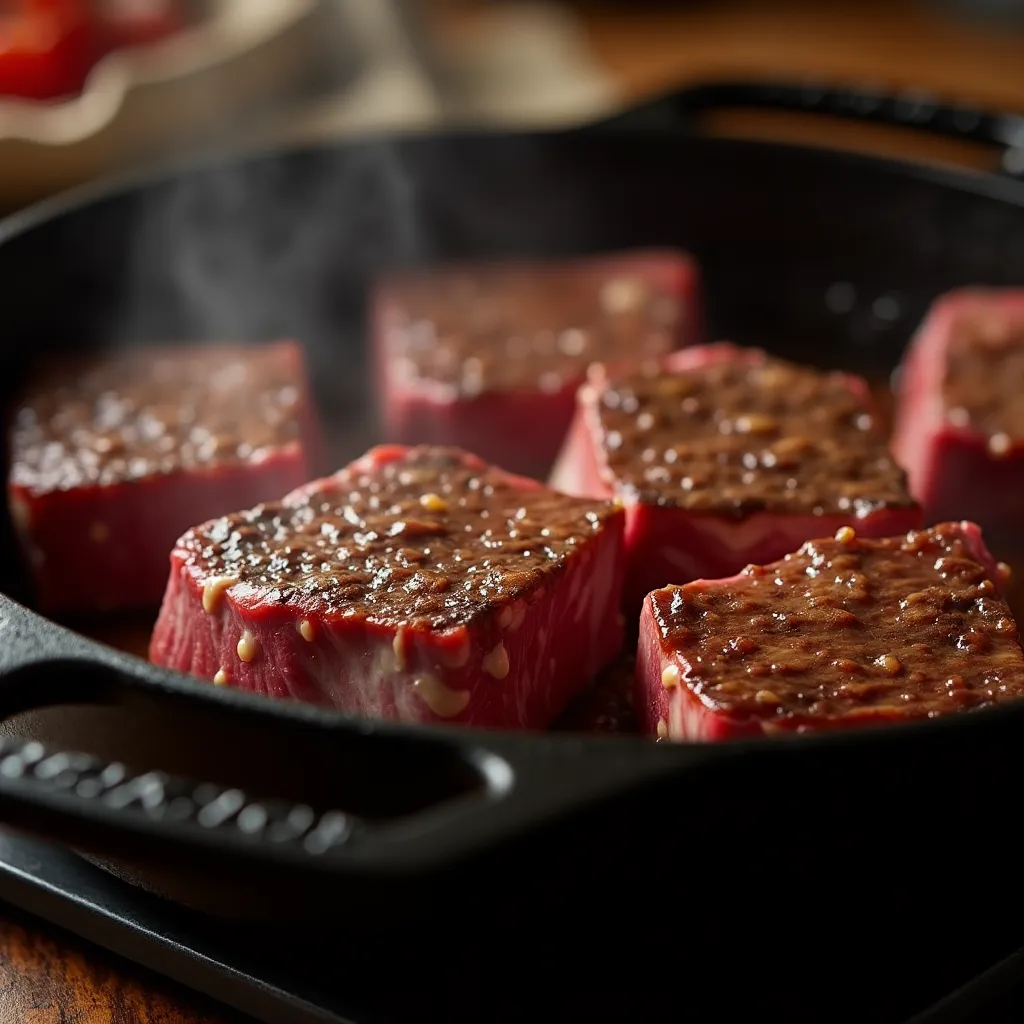
To ensure that the beef in your stew is **tender** and **succulent**, you must first choose the proper cut of meat. Opt for cuts such as chuck roast or round, which are ideal for low and slow cooking. These cuts break down beautifully over time, yielding meat that is not only tender and easy to eat but also has that wonderful beefy flavor that we all crave.
To help keep toughness at bay, concentrate on the searing process. Browning the beef properly before simmering deepens the flavor and helps seal in the juices. To get a deep brown crust, use a pot that is really hot, a beef-browning oil that is really good (my preference is a combination of canola and olive oils), and meat that has been patted dry.
Crucial roles are played by cooking time and temperature. Let the stew simmer slowly over low heat, allowing the fibers the time they need to break down. If you rush the process with high heat, you’re likely to end up with meat that’s tough and chewy. Remember, patience is key here, and that meltingly tender beef has your name written all over it.
If you are looking for more tips on perfecting your stew, check out our guide on making tender beef stew.
Enhancing the Flavor Profile
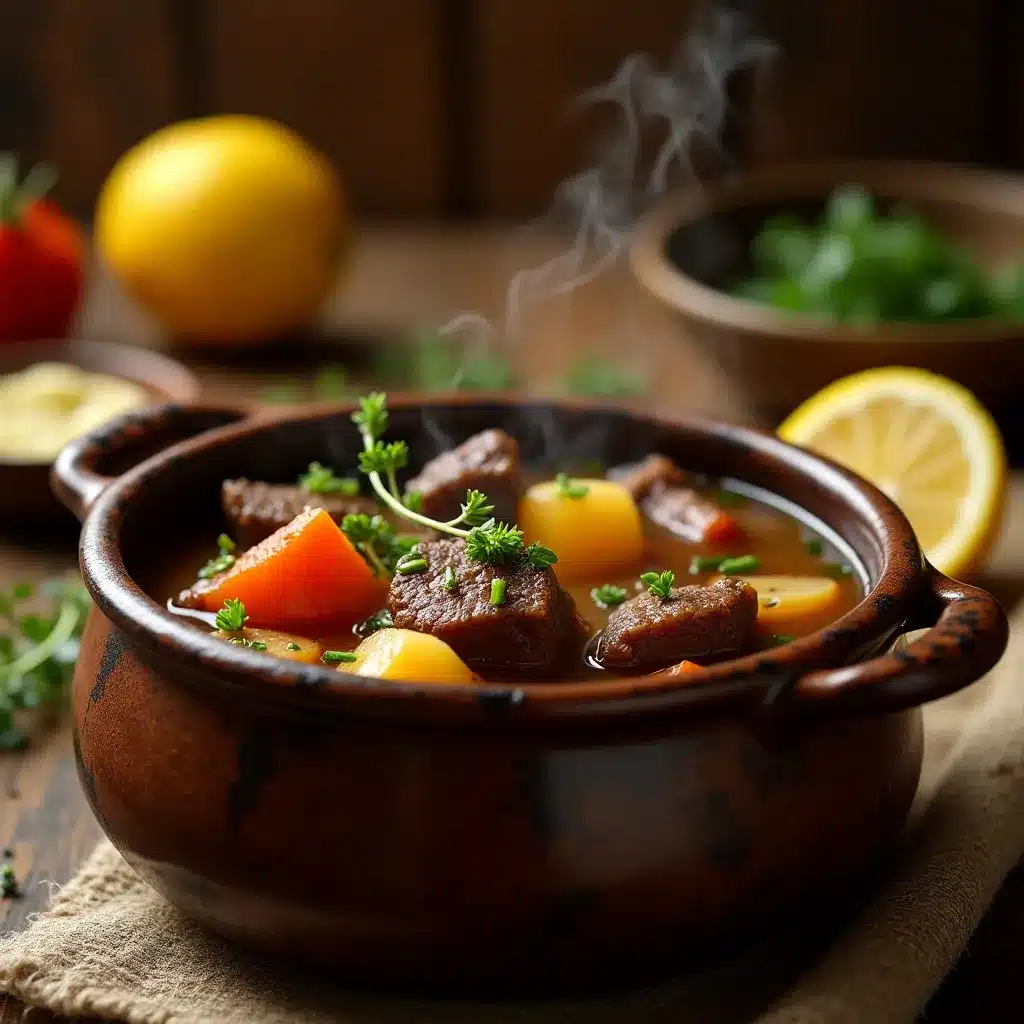
To enhance the flavor profile of your beef stew, you must first consider the balance of seasonings. You need to use salt and pepper, at the very least, to amplify the intrinsic flavors of the beef and the vegetables. Then, as you taste the dish and make decisions about what it needs, you must adjust those basic seasonings to keep everything in line.
If you’re not all that confident with seasoning, your best bet is to use what you know and trust. So, if you use bay leaves in a lot of other recipes, using them here isn’t a bad idea. Add herbs such as thyme, which complements the stew’s robust ingredients. Fresh herbs are best added towards the end of cooking to maximize their flavor and aroma. If you want to take the stew’s flavor to the next level, finish it off with a splash of red wine. Not only will this boost the richness of the dish, but it will also impart a subtle complexity to the overall flavor profile.
A hint of acidity from ingredients like a dash of vinegar or a squeeze of lemon can brighten the overall flavor, slicing through the amped-up richness while serving to round out the taste. Play with these suggestions to find the perfect balance for you, ensuring that your stews are flavorful across the board and well-balanced.
For more detailed guidance on beef stew recipes, you might want to explore our [beef stew recipe guide](https://www.google.com/search?q=value+recipes). Additionally, check out [Fresh Fusion Recipes](https://freshfusionrecipes.com) for diverse and innovative culinary ideas.
Bonus Variations for Your Hearty Beef Stew
Vegetable-Rich Beef Stew
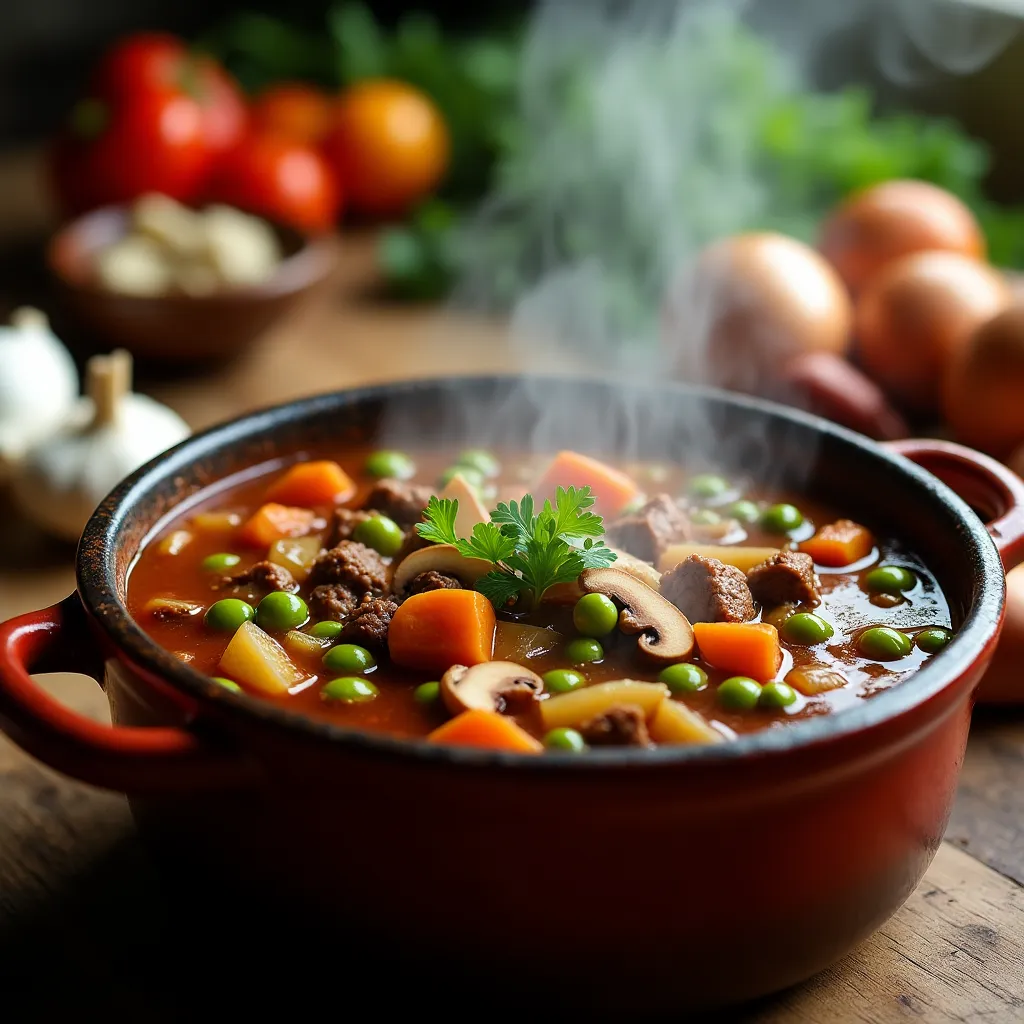
To create a beef stew that’s rich in vegetables, consider increasing the variety of vegetables you use to enhance both flavor and nutrition. Add-ins like mushrooms and peas can boost the stew to new levels of heartiness.
Begin with an assortment of mushrooms—cremini or button mushrooms work well. Clean them thoroughly, then slice them. While the onions and garlic are in the pot, sautéing away, add the mushrooms to the pot, too. Let them team up with the onions and garlic while they all work together to release a glorious medley of flavors.
When the stew nears the end of its cooking time, mix in a cup’s worth of fresh or frozen peas. Peas introduce not only a beautiful color but also a sweetness that is an ideal foil for both the vegetables and the beef.
Try seasonal vegetables or your favorites to personalize your stew. An increasing array of vegetable varieties not only makes the dish more interesting but also allows you to boost the content of wholesome ingredients and comforting flavors. In fact, a dish that isn’t called a “stew” might well be a “stew” if it’s a combination of lots of delicious vegetables cooked for a long time with some flavorful liquid.
For more inspiration on creating a rich and hearty beef stew with vegetables, you can check out these delicious recipes. And if you want to explore different vegetables to add, take a look at this comprehensive guide.
Herb-Infused Beef Stew
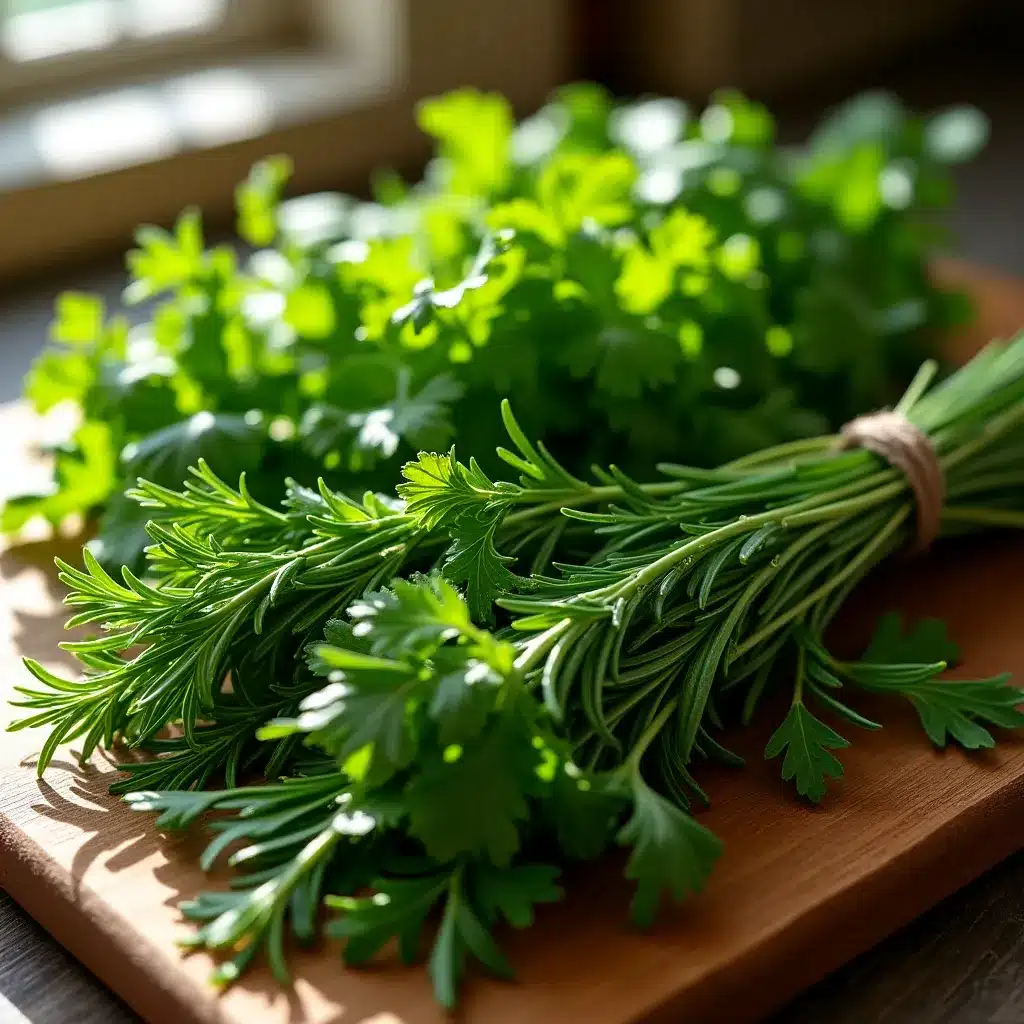
Start by enhancing the base with the kind of fresh herbs that make their presence known, like rosemary and thyme. Their inviting fragrance and unmistakable flavors take beef stew up several notches on the “not-your-mama’s-beef-stew” scale. To learn more about using fresh herbs in beef stew, you can check out this detailed guide.
Start by taking some fresh rosemary and thyme and tying them together with kitchen twine to form a bouquet garni. Add this early-flavoring bundle to the stew so that its taste can infuse with those of the beef and vegetables. While the stew is cooking, the oils in the herbs will break down and seep into the dish, intensifying its flavor.
Prior to serving, take out the herb bundle so that its powerful notes don’t dominate the dish. This allows the subtle grassy essence of the stew to shine through. You can elevate this dish to extraordinary status by adding one last brilliant touch just before plating. Chop some fresh parsley or dill and sprinkle it over your stew. You won’t believe the fresh infusion of flavor that hits you when you take your first bite.
Conclusion
Our hearty beef stew recipe brings warmth and satisfaction, perfect for cozy evenings. With each spoonful, you’ll enjoy the robust flavors of tender beef and fresh vegetables. Whether you choose the classic recipe or try one of our delicious variations, this stew is certain to become a family favorite. Ready to share your hearty creation? Enjoy the smiles around your table as you savor every bite. Happy cooking!

